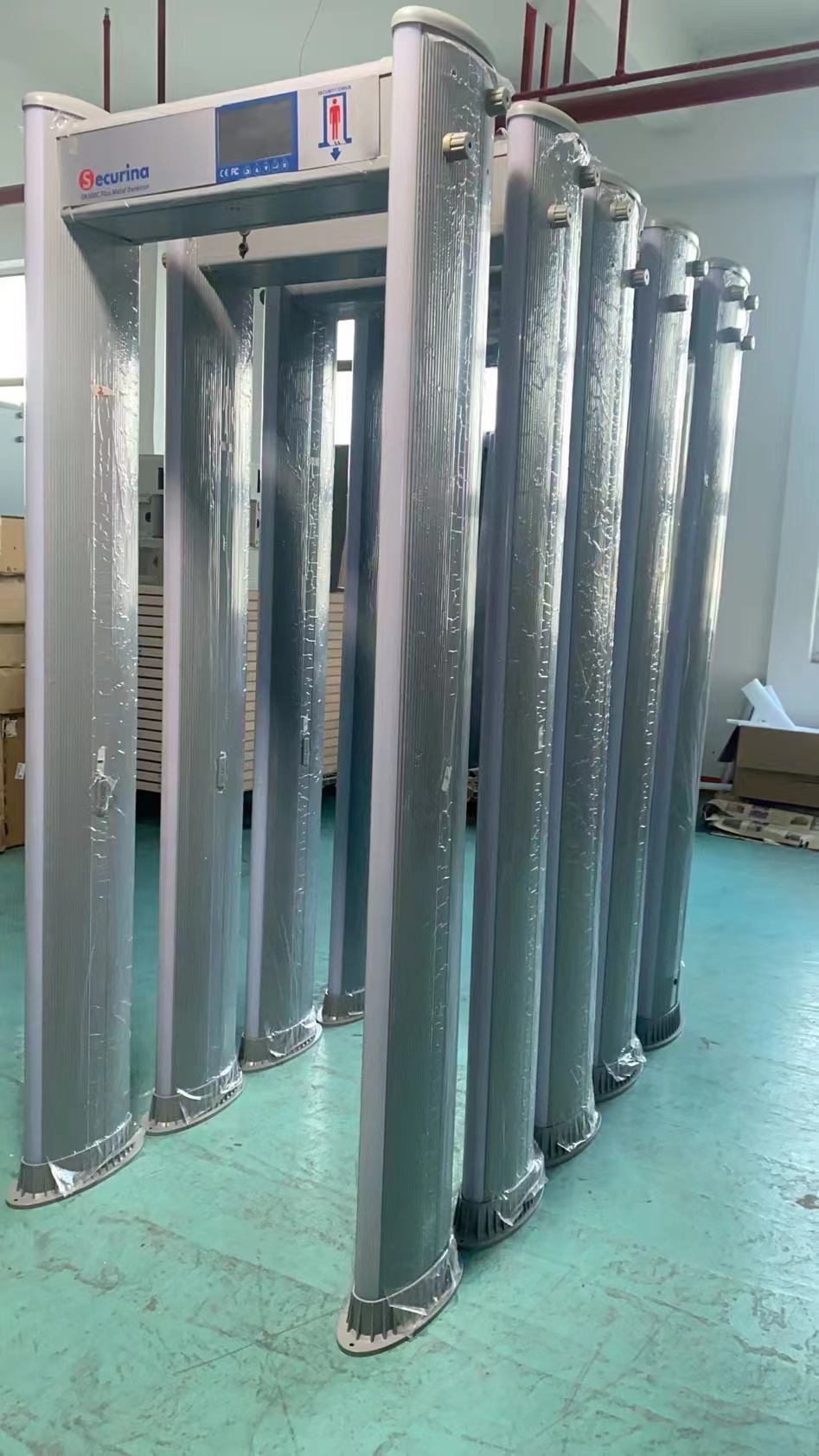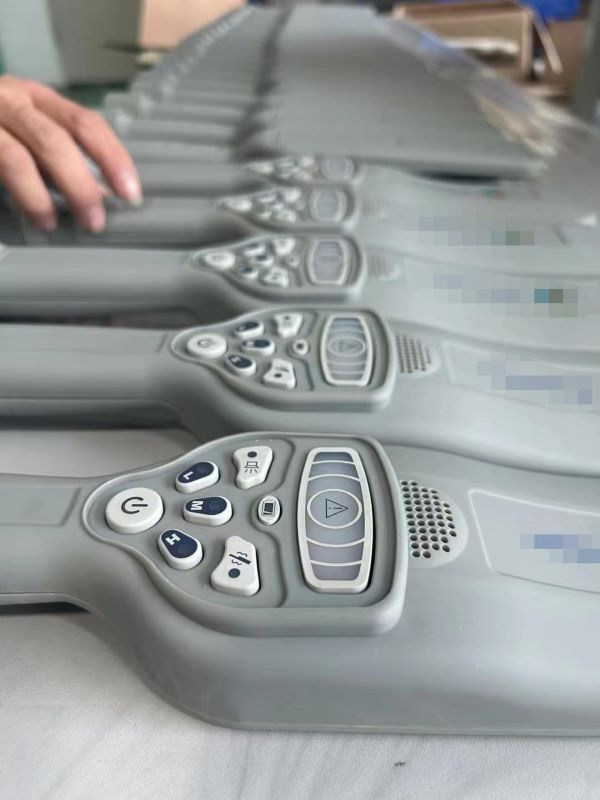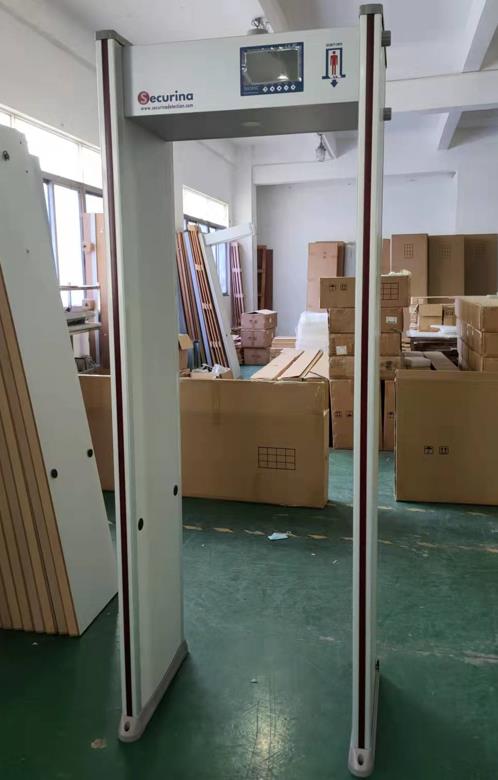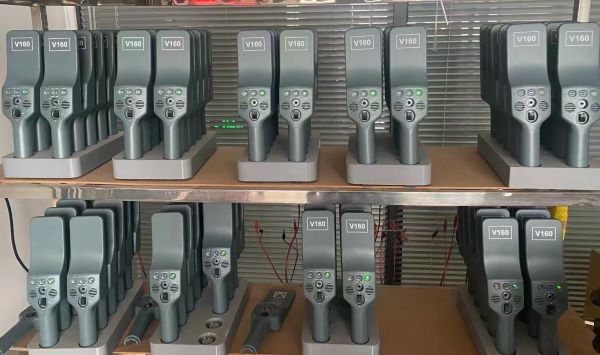Security
has become a paramount concern in today's world, and the need for efficient and
effective screening measures is more critical than ever. Walk-through metal
detectors, archway metal detectors, and door frame metal detectors have emerged
as key tools in maintaining security across various sectors. We will explores
the importance of these devices and their role in enhancing security protocols.
We delve into their features, benefits, and real-world applications to
highlight why they are crucial components of any comprehensive security system.
1.
Understanding Walk-Through Metal Detectors
Walk-through metal detectors, also known as archway metal detectors, are widely used in public spaces, airports, government buildings, and event venues. They are designed to detect metallic objects carried by individuals passing through them. These detectors employ advanced technology such as electromagnetic fields and target identification algorithms to accurately identify potential threats.

Walkthrough metal detectors, also referred to as archway metal detectors, are sophisticated security screening devices that play a vital role in safeguarding public spaces, government buildings, transportation hubs, and various other locations. These devices employ advanced technology to detect metallic objects carried by individuals passing through them, ensuring the prevention of potential threats.
a. Principles of Operation:
Walkthrough metal detectors operate on the principle of electromagnetic fields. These detectors emit lowfrequency electromagnetic waves that interact with metallic objects. When a person walks through the detector, any metallic item on their person disrupts the electromagnetic field, leading to an alarm or signal indicating the presence of a potential threat.
b. Target Identification Capabilities:
Modern walkthrough metal detectors are equipped with advanced target identification capabilities. They employ algorithms and signal processing techniques to differentiate between harmless metallic objects such as jewelry, coins, or belt buckles, and objects that could pose a threat, such as weapons or explosives. This feature helps minimize false alarms and ensures accurate detection of potential threats.
c. Sensitivity Levels and Customization:
Walkthrough metal detectors offer various sensitivity levels that can be adjusted to suit the specific security requirements of different environments. These levels determine the size and type of metallic objects that can be detected. Sensitivity can be customized based on the location, crowd density, and the level of security needed, striking a balance between effective screening and smooth flow of individuals through the device.
d. Benefits and Advantages:
Walkthrough metal detectors provide numerous benefits, making them an essential component of comprehensive security systems. Some key advantages include:
- Deterrence: The presence of a walkthrough metal detector acts as a visible deterrent, discouraging individuals from attempting to bring prohibited items into a secure area.
- Rapid Screening: These detectors can screen a large number of individuals quickly, ensuring efficient flow and minimizing congestion in high-traffic areas.
- Non-Intrusive: Walk-through metal detectors are non-intrusive and do not require physical contact, maintaining the privacy and dignity of individuals being screened.
- Versatility: These detectors can be customized to accommodate different environments, such as airports, government buildings, schools, stadiums, and event venues, making them highly versatile.
- Enhanced Security: By detecting metallic objects, walk-through metal detectors significantly reduce the risk of potential threats, including weapons, explosive devices, and other dangerous items.
e. Real-World Applications:
Walk-through metal detectors find applications in various sectors and industries, including:
- Transportation Hubs: Airports, train stations, and bus terminals utilize these detectors to screen passengers and prevent prohibited items from entering secure areas.
- Government Buildings: Walk-through metal detectors help secure government facilities, ensuring the safety of employees and visitors.
- Events and Venues: Stadiums, concert halls, and conference centers deploy these detectors to maintain security during large gatherings.
- Educational Institutions: Schools and universities use walk-through metal detectors to enhance safety and prevent unauthorized items from entering campuses.
- Critical Infrastructure: High-security facilities, such as power plants, military installations, and nuclear facilities, rely on walk-through metal detectors to protect sensitive areas.
By understanding the principles of operation, the target identification capabilities, and the benefits offered by walk-through metal detectors, organizations can make informed decisions regarding their implementation. These devices act as a first line of defense, providing an efficient and effective means of screening individuals, enhancing security protocols, and creating safer environments.

2. The Role of Archway Metal Detectors in Security
Archway metal detectors serve a critical role in enhancing security protocols by providing efficient and effective screening of individuals in high-traffic areas. These devices are designed to detect metallic objects carried by individuals passing through them, ensuring the prevention of potential threats and the maintenance of secure environments.
a. Advantages of Archway Metal Detectors:
Archway metal detectors offer several advantages that make them an invaluable tool in security screening:
- High Throughput: Archway metal detectors are designed to handle a large volume of individuals, allowing for rapid screening without significant delays or congestion.
- Visible Deterrent: The presence of an archway metal detector serves as a visible deterrent, deterring individuals from attempting to bring prohibited items into secured areas.
- Simultaneous Detection: These detectors can scan multiple individuals simultaneously, making them ideal for crowded areas such as airports, stadiums, and public transportation hubs.
- Non-Intrusive: Archway metal detectors are non-intrusive and do not require physical contact, ensuring a smooth and respectful screening process for individuals.
- Integration with Access Control Systems: These detectors can be integrated with access control systems, allowing for seamless screening and access management.
b. Rapid Screening and Efficiency:
One of the primary advantages of archway metal detectors is their ability to conduct rapid screening of individuals. Their design enables a continuous flow of people through the detector, minimizing queues and congestion. This efficiency is essential in locations with high footfall, such as airports, where thousands of passengers need to be screened quickly without compromising security.
c. Integration with Access Control Systems:
Archway metal detectors can be seamlessly integrated with access control systems, enhancing overall security measures. This integration allows for a streamlined process of verifying the identity of individuals and ensuring that only authorized personnel gain access to restricted areas. By combining access control systems with archway metal detectors, organizations can create a comprehensive security framework that mitigates the risk of unauthorized entry and potential threats.

d. Enhancing Public Safety:
Archway metal detectors play a crucial role in enhancing public safety in various settings. By accurately detecting metallic objects, including weapons or explosives, these detectors act as a deterrent and prevent potential threats from entering public spaces. The visible presence of archway metal detectors also helps create a sense of security among individuals, fostering an environment where people feel safer and more protected.
e. Case Studies and Success Stories:
Numerous real-world examples highlight the effectiveness of archway metal detectors in ensuring security and preventing potential threats. For instance, airports worldwide extensively utilize archway metal detectors to screen passengers and prevent prohibited items from entering secure areas. These detectors have successfully detected weapons, ammunition, and other dangerous objects, enhancing airport security and maintaining the safety of passengers and staff.
Stadiums and event venues also rely on archway metal detectors to maintain security during large gatherings. By implementing these detectors at entrance points, event organizers can ensure a safer environment for attendees and minimize the risk of unauthorized items entering the premises.
In addition to transportation hubs and event venues, archway metal detectors are used in government buildings, schools, and critical infrastructure sites. By incorporating these detectors into their security protocols, organizations across various sectors can effectively mitigate potential risks, enhance public safety, and protect critical assets.

The role of archway metal detectors in security is crucial for maintaining safe environments in high-traffic areas. Their advantages, such as high throughput, visible deterrence, non-intrusiveness, and integration with access control systems, contribute to their effectiveness. By utilizing archway metal detectors, organizations can create a robust security framework that enables efficient screening, enhances public safety, and provides a secure environment for individuals in various settings.
Examining
case studies and success stories of organizations that have implemented metal
detector systems can provide valuable insights into the benefits and outcomes of
such implementations. This section explores a few examples to illustrate how
metal detector systems have been successfully utilized in various industries
and environments.
1.
Airports:
Airports
are high-security environments where metal detector systems play a critical
role in ensuring passenger safety. For example, London Heathrow Airport, one of
the busiest airports in the world, implemented advanced metal detector systems
to enhance security screening. These systems helped detect prohibited items and
potential threats, leading to increased confidence among passengers and a
significant reduction in security incidents.
2.
Sports Stadiums:
Sports
stadiums face unique security challenges due to the large crowds and heightened
risk of potential incidents. An excellent example is the implementation of
metal detector systems at Gillette Stadium, home to the New England Patriots.
The systems effectively enhanced security measures, reducing the risk of
unauthorized weapons or objects entering the stadium. This implementation
resulted in improved public safety, increased public confidence, and enhanced
the overall game-day experience for fans.
3.
Correctional Facilities:
Correctional
facilities require robust security measures to prevent contraband from entering
restricted areas. The Indiana Department of Correction implemented metal
detector systems at various facilities to address this challenge. The systems
helped identify hidden metal objects, significantly reducing the presence of
contraband items and enhancing the safety of both inmates and staff. This
successful implementation served as a deterrent and contributed to a more
secure environment within correctional facilities.
4.
Educational Institutions:
Schools
and universities have increasingly recognized the importance of implementing
metal detector systems to enhance campus security. Marjory Stoneman Douglas
High School in Florida deployed metal detector systems following a tragic
shooting incident. The systems contributed to a heightened sense of security,
reassuring students, parents, and faculty members. The implementation not only
served as a deterrent but also provided a crucial layer of protection against
potential threats.
5.
Government Buildings:
Government
buildings house sensitive information and serve as critical hubs for public
services. Metal detector systems are often utilized to ensure the safety of
personnel and visitors. For instance, the U.S. Capitol implemented advanced
metal detector systems to strengthen security measures. These systems have
proven effective in detecting potential threats and preventing unauthorized
access, contributing to the overall security of the building and its occupants.
6.
Entertainment Venues:
Metal
detector systems are commonly employed in entertainment venues such as concert
halls, theaters, and arenas to maintain a secure environment for patrons.
Madison Square Garden, a renowned entertainment venue in New York City, has
implemented metal detector systems to enhance security screening procedures. The
systems have successfully detected prohibited items and minimized security
risks, ensuring a safe and enjoyable experience for attendees.
These
case studies and success stories highlight the positive outcomes associated
with the implementation of metal detector systems. In each scenario, the
systems have demonstrated their effectiveness in detecting and deterring
potential threats, enhancing public safety, and providing peace of mind to
individuals within the respective environments.

Furthermore,
these success stories emphasize the importance of strategic planning,
collaboration with security experts, staff training, and ongoing evaluation and
refinement of security protocols. Implementing metal detector systems should be
part of a comprehensive security strategy that considers the unique needs and
challenges of each environment.
By
studying these case studies and success stories, organizations can gain
valuable insights into the benefits and outcomes of implementing metal detector
systems. These examples serve as an inspiration and provide real-world evidence
of the positive impact of metal detector systems on security, risk mitigation,
public perception, and overall operational efficiency.
Walk-through
metal detectors, archway metal detectors, and door frame metal detectors play a
pivotal role in enhancing security measures in a wide range of settings. By
implementing these devices effectively, organizations can significantly reduce
the risk of threats and provide a safer environment for individuals. From
airports to government buildings, stadiums to corporate offices, these security
screening tools have become an integral part of modern security infrastructure.
By adhering to best practices and staying updated with the latest advancements
in metal detector technology, organizations can fortify their security measures
and mitigate potential risks effectively.
Securina Detection System Co., Limited is a professional manufacturer / factory / exportor of security walk through metal detectors / door frame metal detectors / archway metal detectors / magnetometer gates from China. Deffirent multizone metal detector systems with 6,8,18,24,33,45,60,90 zones for your choices. Welcome send inquiry to [email protected]